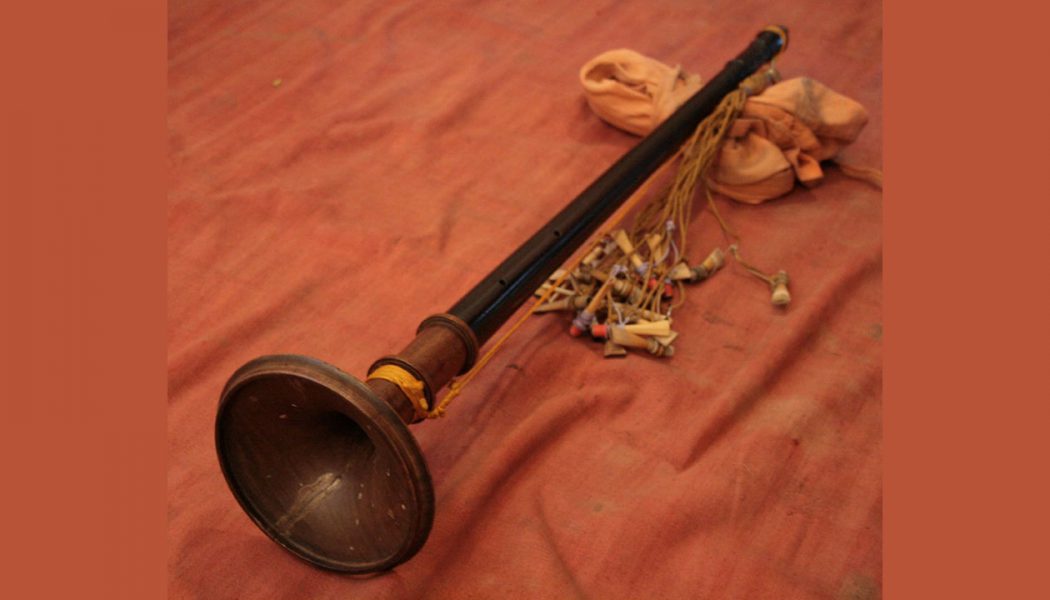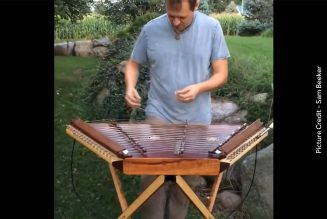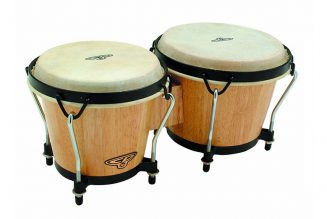Nadaswaram is a double reed, wind instrument having its origin from South India. It is a part of the family of musical instruments known as Mangala Vadyam. Mangala means “Auspecious” and Vadyam means “Instrument”.
Nadaswaram finds an important place in the South Indian Classical Music and widely used in Tamil Nadu, Kerala, Andhra Pradesh and Karnataka. It resembles the North Indian Shehnai but it is much longer than Shehnai. It is also one of the world’s loudest non-brass instruments. Nadaswarm is usually paired with Tavil a double headed Drum Instrument.
Structure
The three main parts of Nadaswaram are Kuzhal, Thimiru and Anasu. Kuzhal or a long Tube with seven finger holes is the important part. Holes are drilled at equal intervals. The tip of the instrument is made of natural Reed. The body of the instrument is made out of a tree called “Aacha”. Others like Sandalwood, Bamboo, Copper and Ebony are also used for making the body. Range of the Nadaswaram is two and a half octaves.
The tube resembles a conical bore enlarging towards the lower end. Top portion of the tube has a metal staple and a small metallic cylinder is inserted into it. This carries the mouth piece of the Nadaswaram, which is made of reed. Spare reeds are used and replaced whenever needed. An ivory or horn needle is used to clear the reed of the saliva and to allow free passage of air.
Playing the instrument
One needs to have excellent breath control for playing the instrument. This makes Nadaswaram one of the toughest instruments to play. Air is blown into the mouth piece using the player’s mouth and the sound is adjusted by closing and opening of the finger holes. The air flow into the pipe is controlled thus and semi and quarter tones are produced.



